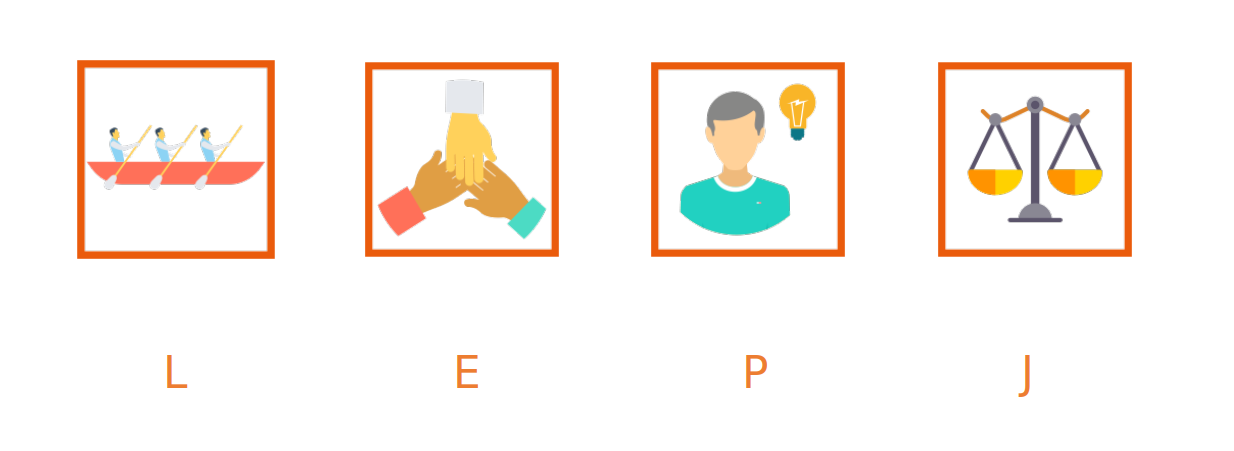Is there a way of telling whether a team "clicks", i.e. can work together? I think there is, and this idea can be further extended to increase team cohesion, because it can reveal multiple parameters at once.
A team is a set of people with 1+ members. In order to know what to check we have to identify the "trigger point". So the question is - what is the most influencing factor when it comes to conflicts? Decisions.
Conflicts arise when we make decisions because that is the moment when we might start to steer in different directions.
VALUES are the secret sauce.
We base our decisions on values and that of course has a huge influence on interaction with others. How? Some people expect others to share their work ethics and love working in a cooperational group, whereas others prefer to have their own style - all the way to the "my way or highway" attitude.
There are people that will absolutely hate rules and regulations that seem to be unfair - and there are people that will hate them because they can be limiting their own personal freedom. Can you see how fundamental such views are for the decision making process now?
VALUES aren't observable - we cannot infer them just by observation. They require an assessment. This idea is nicely illustrated in the iceberg model below:
- personality styles: observable elements
TEAMS,VALUESandBAIare below the surface, i.e. cannot be observed directly
The model highlights areas where diversity benefits the team, and where it can cause conflicts.
There are neither bad nor good values, but there is "bad alignment" where members of the team use different values when making decisions. This is when friction, misunderstandings and conflicts are born.

TEAMS describes preferred team roles, i.e. what roles are most natural for a given person and BAI which stands for Behavioral Attitude Index describes our inner motivations that influence the end result.
If we look on a team composition from the "soft perspective", i.e. without taking into account competences, then we can land on the following simple definition of a cohesive team:
- shared goals: with similar
VALUESpeople are more likely to work together towards the goal and support each other - cultural fit: with aligned
VALUESit's easier to foster a unified and healthy team culture - motivation:
BAIalignment supports the team during execution as at this point personal beliefs align with their work goals
VALUES are used during decision making process, and alignment promotes a quicker resolution and fewer conflicts. BAI supports the team during execution phase, but has much smaller impact on the overall cohesion during decision making process (which we have identified as the biggest source of conflicts).
Example? For example, if one team member values perfection ("release only complete features") and another values speed/fail fast ("release features quickly for feedback"), they will conflict over release decisions.
How can they be measured?
Tools like DISC D3 personality assessment (among many others) can reveal how different personalities can complement each other, enhancing team performance, cohesion and communication capabilities.
In fact DISC D3 comes also with the so-called DTVB graphs for teams, i.e. graphs that present the whole team at once. Each letter stands for a graph type:
- D:
DISCpersonality style; the observable element that is the key thing for optimized communication - T:
TEAMSpreferred team roles; what people excel at naturally - V:
VALUESthat people use for their decision making process; what do they base their decisions on? - B:
BAI(Behavioral Attitude Index) - inner motivators that influence the end result
Conflicted teams often have no alignment on the V graph. Is it possible for a team with diverse values to work?
Of course it is. In IT brute-force is a well known technique... that often isn't labelled as "the most efficient". Sooner or later a team that naturally ignites itself into a conflicting state will fall apart, and you stand to miss workforce and of course it has an impact on efficiency.
Who wants to work in a conflict-ridden environment? I don't.
Salaries in IT aren't small, and I am still wondering why hiring managers and team leaders aren't using tools like personality tests to figure out their team composition.
What is measured in VALUES?
DISC D3 assessments measure 4 core values that tend to have the most impact in the work environment:
- L Loyalty
- E Equivalence
- P Personal freedom
- J Justice

Interpretation of the V graph is something pretty challenging, because there are plenty of nuances that can lead to a dead end.
In order to show you the full impact of the VALUES assessment I will list the most relevant aspects that should be evident to any IT hiring manager or team lead.
- Loyalty:
- "I expect others to share my work ethic and loyalty"
- "I am loyal to a mission or a belief system"
- Equivalence:
- "I dislike rules and regulations that conflict with my personal feelings or that appear to be unfair"
- "I am prepared to overcome obstacles in order to obtain personal satisfaction and fulfillment"
- Personal freedom:
- "I prefer to exhibit my own style rather than follow trends"
- "I prefer to do things my way and have control over situations"
- Justice:
- "It doesn't matter if things are equal as long as a 'win-win' situation exists"
- "It is crucial to me that I have a positive impact on the world around me"
Above is a small selection of matching descriptions of each value. When you think of them in the context of the decision making process, then it should be pretty evident that they can in fact be conflict starters.
Final word
Results from the VALUES sections of the DISC D3 assessment carry a huge potential when it comes to analyzing conflicted teams - or checking whether there is a risk for conflicts.
As I have mentioned it before - I still wonder why hiring managers and team leads aren't using this tool when building their own teams. I can imagine that shortage of skilled workforce indeed forces companies to make often drastic decisions, but values-diverse teams aren't really long distance runners...
Illustrations in the article and text fragments describing values: Copyright@EFFECTIVENESS/PeopleKeys




